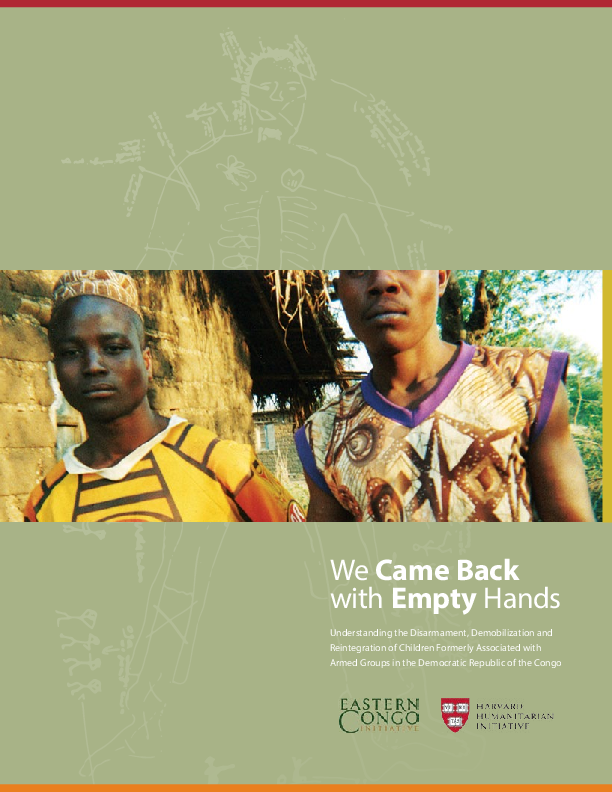
Case Studies and Success Stories, Reports, Study: Research
We Came Back with Empty Hands: Understanding the disarmament, demobilization and reintegration of children formerly associated with armed groups in the Democratic Republic of the Congo
Publication year:
2013
English
Format:
(5.6 MiB)
Publisher:
Eastern Congo Initiative,Harvard Humanitarian Initiative
The use of underage combatants was widespread in the Democratic Republic of the Congo (DRC) in both the First Congo War (1996–1997) and the Second Congo War (1998–2003). When the Global and Inclusive Agreement on Transition in the Democratic Republic of the Congo formally ended hostilities in 2003, DRC had approximately 30,000 underage combatants awaiting demobilization. This made it one of the countries with the highest numbers of underage combatants in the world at the time.
Despite increasing attention to the scope and importance of child soldiering globally, there is still limited systematic research on the successes and challenges of reintegration programming for former underage combatants. While the importance of undertaking reintegration programming has been recognized as an important step for both reintegrating individuals into communities and promoting peace and security at a societal level, significant gaps in understanding how to implement sustainable and successful reintegration programming remain.
This project uses DRC as a case study to examine the community experiences and attitudes around Disarmament, Demobilization and Reintegration (DDR) programming to generate lessons learned for improving future programming for former underage combatants and at-risk youth.
Read full abstract
View & Download
Document information
Content type
Region
Rights
© Author/Publisher
Found a mistake? Help us improve!
If you have noticed a document assigned to the wrong author or any other inaccuracies, let us know! Your feedback helps us keep our data accurate and useful for everyone.
Share
Link
